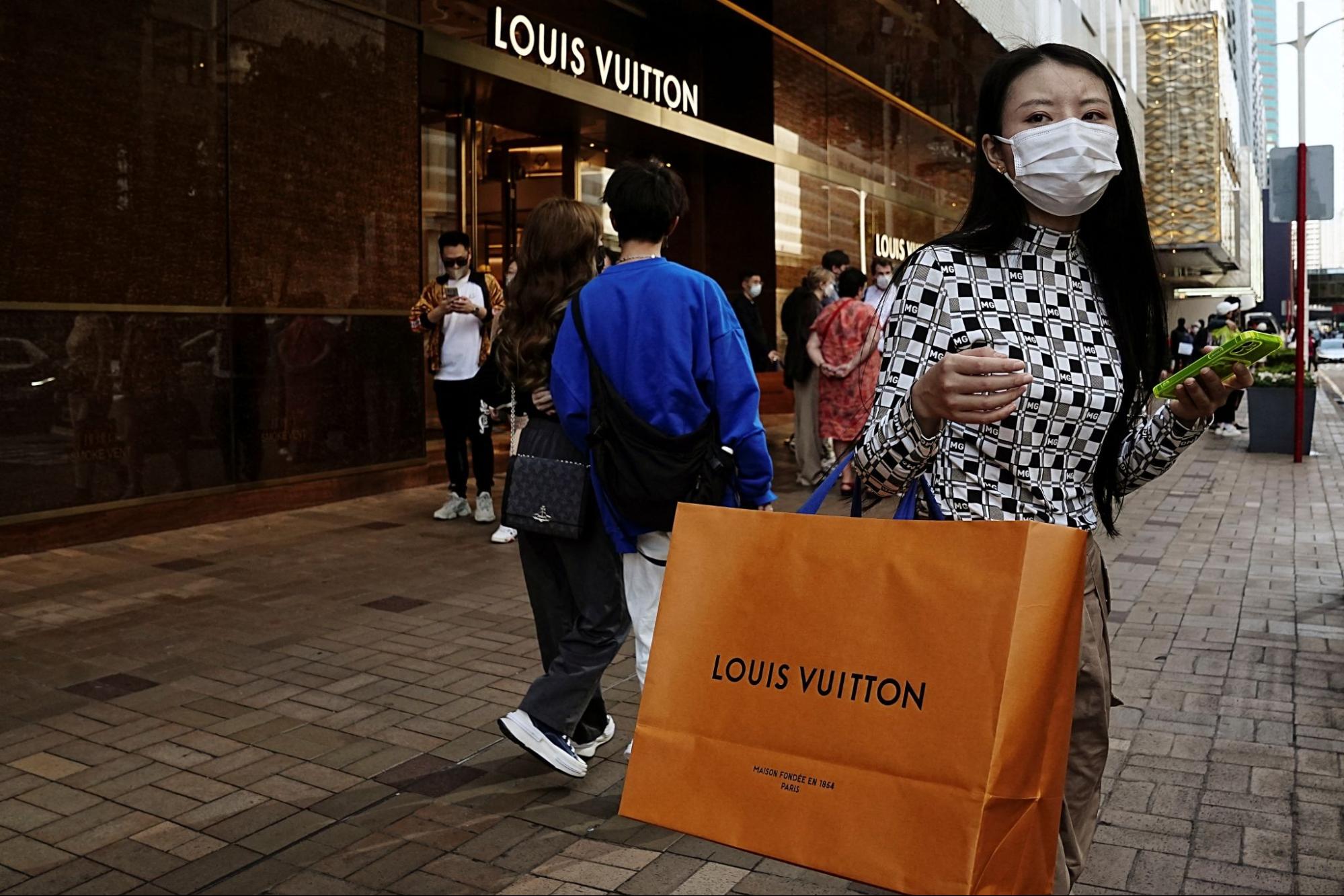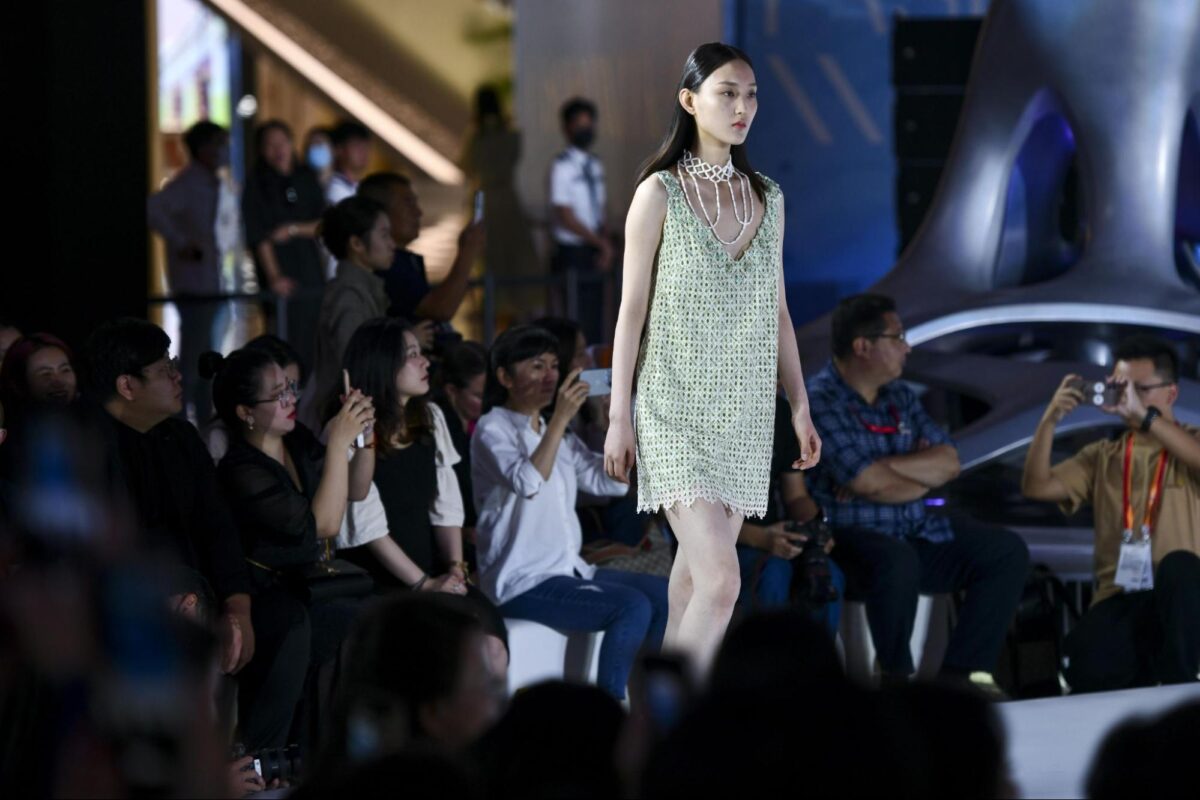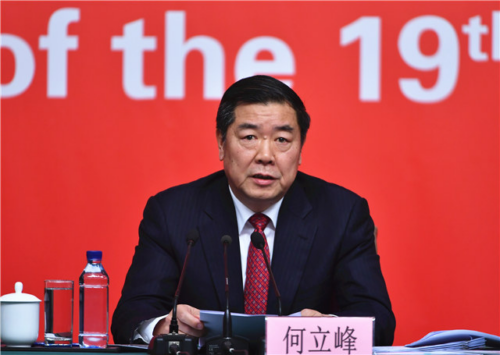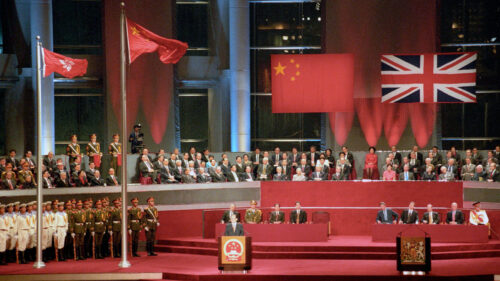What China’s reopening means for luxury brands
The harsh lockdowns of 2022 changed luxury consumption in China. As travel returns to normal, will Chinese consumers continue to spend on luxury, and will they go back to buying in Hong Kong and Paris?

Luxury brands are watching China closely. Understandably so: Chinese luxury consumers make up over a third of global consumption and are expected to account for 60% of luxury growth until 2030. Luxury brands are characterized by high quality and high prices. In China, the dominant high-end luxury houses include Chanel, Dior, Hermès, Gucci, and Louis Vuitton. Low end luxury brands tend to be cosmetics brands, with Lancôme and Estée Lauder being the most popular in China, according to Agility Consulting.
As China shut itself off from the outside world in early 2020, Chinese luxury consumers shopped only in Mainland China, leading to unprecedented at-home spending. To keep up, global luxury brands developed their Chinese ecommerce strategies further, launched limited edition products, and invested in new stores beyond Beijing, Shanghai, and Guangzhou. Between 2019 and 2021, Chinese luxury spending increased by 42%.
COVID kept Chinese luxury consumers at home
A classic Hong Kong stereotype of a Chinese Mainland tourist in 2019 was of someone walking around Hong Kong shopping malls with high-end suitcases and luxury-branded bags around their arm — all full of luxury purchases.
Pre-COVID, most Chinese luxury consumers went to Hong Kong or Europe to do their spending. Lower prices and the appeal of buying European luxury in Europe (or abroad) were the main drivers. Prices are 25-45% lower abroad relative to the Chinese Mainland, due to import taxes. Before COVID, that amount could often be as much as the flight ticket and hotels themselves.
In January 2020, the pandemic brought overseas shopping trips to a halt, but luxury consumption in 2020 and 2021 in Mainland China was above and beyond all expectations. Upon its reopening in April 2021, Hermès’ flagship Guangzhou store made $2.7 million in sales. That’s equivalent to a ninth of the luxury house’s average daily global sales that year in just one store.
This trend continued in 2021, with brief pauses in activity in certain cities when there were lockdowns or reported COVID cases. Gucci’s Chengdu store achieved the highest revenue worldwide in 2021.
According to the regional head of a French luxury brand who declined to be named, these results were a mixture of Chinese consumers being unable to leave Mainland China, and COVID lockdowns in the West leading to slower sales and more merchandise being freed up for Chinese consumers. What it did, however, was prove the power and the potential of the Chinese consumer in an unprecedented manner.
Chinese luxury consumers are significantly younger than their American or European counterparts. Picture an ambitious Gen Z woman (younger than 25 years old) who is ready to spend big bucks to look the part. Her luxury handbag and designer shoes are tools to help her get ahead, which is why the logo on the product is important.
Pushed by this new generation of customers and COVID, luxury brands in China need highly integrated ecommerce and social media strategies. A fashion luxury house’s Chengdu city manager told us that whereas previously, Chinese luxury consumers could be convinced to buy something in store, now they’ve usually already formed their own opinion and judgment of the brand before entering the store. PR and influencer marketing are becoming more and more important.

The Chinese luxury consumer is more assured than before, not just about their own opinion, but also about China’s place in the world. “The guócháo (国朝) trend means young consumers are confident and lean towards national, Chinese brands. This is compelling brands to localize more, and work much harder developing experiences for the customer,” said Harriet Sheffer, Outform’s Marketing and Strategy Director for the Asia-Pacific region.
However, COVID also bred a lot of uncertainty in China. Three tough years have made the average Chinese consumer more price conscious and reluctant to travel abroad in the short-term.
The rise of “rational spending”
Chinese luxury consumption is moving away from impulse spending towards more “rational” spending (理智消费). Purchases are becoming more calculated and intentional — whether that be for packaged foods or luxury goods.
According to the consultancy Oliver Wyman, 52% of Chinese consumers are more conscious of value-for-money than a year ago. However, this seems to primarily impact lower tier rather than top tier luxury brands. According to Morgane Nopper, Senior Merchandiser at Louis Vuitton, China remains the least price sensitive luxury consumer market for their brand.
As we spoke to Yeung San (王江洋森 Wáng Jiāng Yángsēn), a 21-year-old VIC (Very Important Customer) at Hermès, who purchases around 30,000 yuan ($4,366) in luxury goods per month, he described how he evaluated different brands and products. For him, Chanel and Hermès products are long-lasting and worthy investments. The haute couture and refined craftsmanship mean that he’s more easily able to re-sell them second hand afterwards.
The return of the Chinese tourist?
A more value-for-money conscious Chinese population of consumers would suggest that they’re also more likely to calculate the price benefit of spending abroad. However, Chinese tourists are likely to take much longer than their Western counterparts to resume international travel.
To encourage more domestic tourist shopping, the Chinese government has invested heavily in Hainan’s Duty Free Zone since 2020. China Duty Free Group (CDFG) and its affiliates, which are the main investors in this zone, have led aggressive promotional campaigns, and while traffic was down in 2022 due to COVID policies, per shopper spending increased by 8%.
Duty free, especially that of South Korea which has kept steadfast through COVID, is an important channel for “dàigòu” (代购), which refers to individuals buying goods abroad and personally bringing them back to China in their luggage to avoid import taxes. The daigou sector was valued at 400 billion yuan ($57 billion) in 2020 by Re-hub. During COVID, a lower volume of flights and more stringent Chinese customs regulations slowed daigou down. Now, with Hainan’s more accessible Duty Free and continued strict Chinese customs, perhaps a new form of daigou will emerge between Hainan and the rest of China.
Although Oliver Wyman’s report suggests that the Hong Kong experience in the last five years was better than that of Hainan, a lot has changed in five years. While the border reopening led to a stream of Mainland Chinese shoppers, it’s a far cry from pre-pandemic times. According to one luxury brand’s regional head who declined to be named, the assortment of products in Hong Kong is of similar quality to that of Mainland China now, and luxury customers would rather go to Europe or Japan than Hong Kong.
Industry consensus seems to be that Chinese tourists will return to Europe and other foreign destinations, if not Hong Kong, but slowly, over the coming two years. Luxury brands are preparing themselves for this, according to Morgane Napper, Senior Merchandiser at Louis Vuitton, with Louis Vuitton Japan starting to stock products preferred by Chinese consumers.
Chinese consumers got used to spending at home, and are conscious of the rise of airfares, hospitality, and other prices abroad. Yeung San, the 21-year-old Hermes VIC, for instance, doesn’t intend to leave China anytime soon. Even if he were to do so, it wouldn’t be often, so his main spending will stay in his hometown Chengdu, and maybe online for the more classic products.
China is still the land of luxury opportunity
Although price sensitive customers will travel to buy products cheaper abroad, the top spenders will continue to spend in China. A few thousand yuan does not matter to these top spenders. Furthermore, with the rise of exclusive collections in certain cities and China, some products can only be bought in China.
Top luxury spenders make up a very important proportion of luxury spending. Globally, 40% of luxury sales come from 2% of consumers, according to Bain, with an even higher concentration in China. Tailored events, spaces, services, and products are directed at these VICs (Very Important Customers). If this segment continues to increase as is predicted, and they keep spending locally (even if they do so abroad as well), Chinese luxury sales will likely stay robust.
Luxury brands’ confidence in the Chinese market is shown by their investments moving into new cities, and creating more unique spaces. Louis Vuitton opened its first restaurant and museum space in Chengdu last year. Meanwhile, others are investing heavily in destination pop-ups, such as Dior’s ice sculpture building in Lake Songhua Resort in Jinlin province.
Although China’s post-COVID opening will make the Chinese market even more competitive, it remains a land of opportunity for leading luxury houses who continue to innovate, localize, and stay on top of the trends.
Companies:
- Chanel
- Dior
- Hermès
- Gucci
- Louis Vuitton
- Lancôme
- Estée Lauder
- China Duty Free Group (CDFG)
Sources and additional data:
- Chinese buyers to boost luxury goods sector / Morgan Stanley
- Who’s top of the Agility Luxury Brand Affinity Rankings for 2021 / Luxurious Magazine Hermès hauled in $2.7 million in one China store on Saturday: sources / WMD
- Louis Vuitton debuts first China restaurant in Chengdu as luxury brands target spending power in lower-tier cities / SCMP
- Chinese luxury consumers — trends and challenges for luxury brands / Martin Roll
- Setting a new pace for personal luxury growth in China / Bain
- What is the impact of the China daigou market on luxury handbag brands? / Re-hub
- China’s consumption outlook / Oliver Wyman
- The daigou dilemma: LVMH pushes back against China’s ‘personal shoppers’ / Jing Daily
- Leap of luxury: Figures, trends and, actions / Bain






